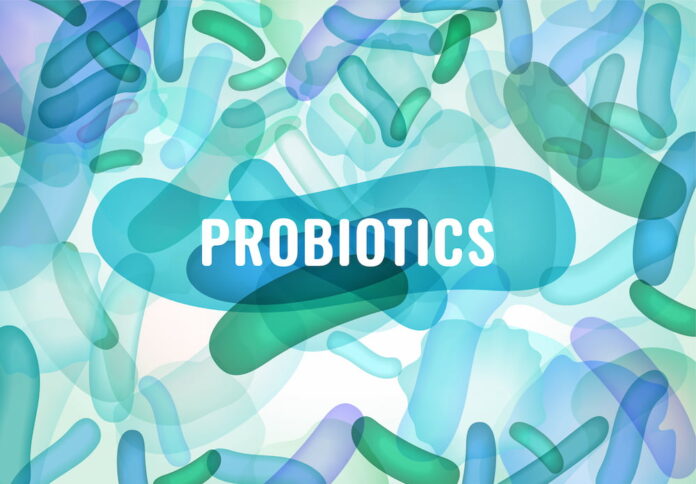Probiotics are live, tiny microorganisms that can give health benefits when consumed in sufficient amounts. They are often referred to as “good bacteria” and are believed to promote a healthy balance of microorganisms in the gut.
How Do Humans Take In Probiotics?
There are several ways to introduce probiotic organisms into the body, including:
Food
Many fermented foods, such as yogurt, kefir, sauerkraut, and kimchi, contain probiotic organisms. Eating these foods regularly can help promote a healthy balance of microorganisms in the gut.
Supplements
Probiotic supplements are available in many different forms, such as capsules, tablets, powders, and liquids. These supplements often contain a combination of different probiotic organisms and can be taken orally.
Probiotic-enriched foods
Some foods, such as certain brands of cereal, juice, and snack bars, are fortified with probiotic organisms. These foods can be a convenient way to introduce probiotics into the diet.
While some probiotics occur naturally in the human gut, others must be ingested intentionally. Some traditional dairy foods contain important probiotics, which give them their tangy taste. There are many different probiotic organisms, but some of the most important ones include the below.
Lactobacillus
This is a genus of bacteria that includes many different species, such as L. acidophilus, L. plantarum, and L. rhamnosus. Lactobacillus is commonly found in the human gut and is often used as a probiotic to promote digestive health. It has also been shown to have antimicrobial properties and may help prevent infections.
Bifidobacterium
This is another genus of bacteria that is commonly found in the human gut. Bifidobacterium species, such as B. bifidum, B. lactis, and B. longum, are often used as probiotics to promote digestive health and may also have immune-boosting properties. Take this probiotic quiz to find out more about how digestive health can be impacted by live microorganisms.
Streptococcus Thermophilus
This is a species of bacteria that is commonly used in the production of yogurt and other fermented dairy products. It has been shown to have probiotic properties and may help improve lactose digestion.
Streptococcus thermophilus is used in the production of yogurt because it helps to ferment the lactose in milk into lactic acid, which gives yogurt its characteristic tangy flavor and thick texture. This practice originated in Central Asia and the Middle East, where people have been fermenting milk to make yogurt for thousands of years. The use of Streptococcus thermophilus in yogurt production was likely discovered through trial and error, as people observed which microorganisms produced the desired texture and flavor in their fermented milk products.
Saccharomyces Boulardii
This is a yeast species that is often used as a probiotic to promote digestive health. It has been shown to be effective in treating diarrhea caused by antibiotics and other infections. This enzyme is not naturally found in the human gut, but is contained in the yogurt drink kefir, which originated in the Middle East. Kefir consumption is increasing in the Western world – largely due to the health benefits that it offers. It also happens to taste extremely good.
Read Also
- Ketamine-Assisted Therapies: Impacts on Employee WellbeingWorkplace stress is common today. Many employees feel tired, anxious, or burned out. Regular therapy can help, but some people need more support. Ketamine-assisted therapy is showing good results for mental health. A ketamine-assisted therapist guides each session safely. This therapy can improve mood, focus, and energy. Learning more about it can help teams stay… Read more: Ketamine-Assisted Therapies: Impacts on Employee Wellbeing
- The Future of Men’s Health: Why Telehealth Is Here to StayTelehealth isn’t just a pandemic trend that faded into the background. For Australian men, it has become one of the most practical, time-saving, and stress-free ways to manage everyday health — and it’s shaping the future of how we access care. Platforms like DOCTO, an Australian online doctor and specialist telehealth service, are leading the… Read more: The Future of Men’s Health: Why Telehealth Is Here to Stay
- How to Build a Simple, Clean Skincare Routine ?You don’t need a complicated skincare routine. It doesn’t have to be something that requires twenty different products and confusing steps. Your routine works well with just a few high-quality clean ingredients. The beauty industry keeps pushing more products, but your skin actually needs less. You only need a simple approach to get better results… Read more: How to Build a Simple, Clean Skincare Routine ?
- How Preventive Dental Care Supports Overall HealthHave you ever wondered how a simple dental checkup could impact your entire body? Oral health is more than just a bright smile. Studies show that poor dental habits can contribute to serious health problems. Gum disease and tooth decay are linked to heart disease, diabetes, and infections. Yet, many people overlook preventive dental care.… Read more: How Preventive Dental Care Supports Overall Health
- Seeing Clearly in a High-Tech World: A Deep Dive into Advanced Vision Care ServicesProtecting your eyesight isn’t optional—it’s essential. Modern eye care has evolved far beyond basic exams, offering advanced diagnostics, personalized treatments, and surgical innovations that keep vision sharp for life. A leading example is Intermountain Eye Center, home to specialists like Dr Fishburn Boise, where patients receive comprehensive, high-level vision care designed to preserve long-term eye… Read more: Seeing Clearly in a High-Tech World: A Deep Dive into Advanced Vision Care Services
- Why the Keto Diet Works for Some People—and Fails Dramatically for Others: An Ayurvedic Breakdown for Modern HealthcareThe keto diet has dominated weight-loss culture for years. For some people, it produces rapid fat loss, stable energy, and improved mental clarity. For others—especially those who gain weight easily—it leads to burnout, digestive distress, rebound weight gain, high cholesterol, and a metabolism that feels slower than before. Healthcare often frames this as a discipline… Read more: Why the Keto Diet Works for Some People—and Fails Dramatically for Others: An Ayurvedic Breakdown for Modern Healthcare







